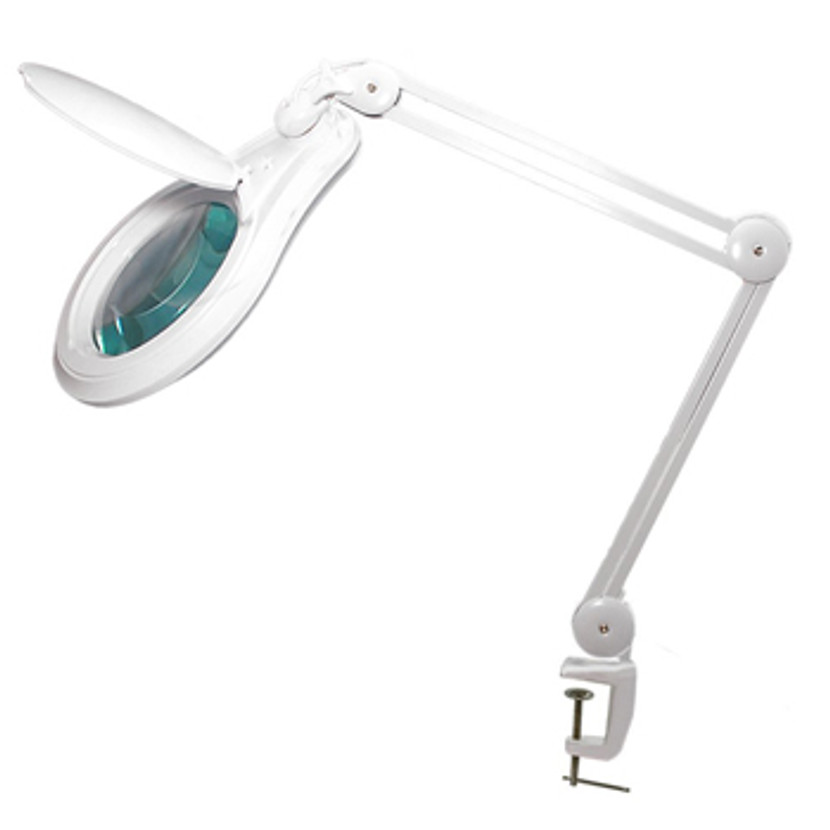How to Measure Your Microscope Eyepiece for the Correct Reticle Size
Buying the right microscope reticle starts with one critical step: measuring the internal diameter of your eyepiece. This guide walks you through exactly how to measure your eyepiece, determine compatibility, and choose the correct reticle size.
⚠️ Important Note: The number printed on your eypiece does not indicate the reticle size. Do not go off this number alone.
For example: If you see 10X/22mm, the 22mm refers to the Field of View of the eyepiece, not the actual reticle size for the eyepiece. To ensure your reticle fits, make sure to measure it yourself to order the correct size.
Another common misconception is going off the eyepiece tube diameter (such as 23mm, 23.2mm, or 30mm). This shows the outer diameter of the eyepiece tube, which will be inserted into the microscope's eyetube. However, do not use this measurement, as it will be too large. You will need a reticle diameter that is smaller, in order to have the reticle fit inside the tube of the eyepiece.
Whether you use a biological microscope, stereo microscope, or metallurgical microscope, BoliOptics offers precision microscope reticles in all sizes—ready to fit your exact setup.
✅ Step 1: Remove the Eyepiece From Your Microscope
Start by carefully removing the eyepiece from the microscope.
-
Before pulling the eyepiece out, look to see if there's any fixing screws holding the eyepiece in place. Unscrew it first, to prevent scratching your eyepiece. Then, pull it straight out or gently twist if it’s threaded.
-
Turn the eyepiece upside down so you can see the bottom end—the part that inserts into the microscope tube.
✅ Step 2: Locate the Reticle Holder (If Present)
Look inside the bottom of the eyepiece. Some eyepieces have a reticle holder or retaining ring—often a plastic or metal ring that unscrews.
-
If you see a ring, gently unscrew or remove it to expose the seat where the reticle goes.
-
If you don’t see a holder, your eyepiece may not be designed to accept a reticle directly.
Tip: If your eyepiece doesn’t have a reticle seat, you may need to:
Use a reticle retaining ring, or
Glue the reticle in place (not recommended unless permanent)
✅ Step 3: Measure the Inside Diameter of the Eyepiece
This is the most important step. Measure in millimeters (mm). Measure the inner diameter (ID) of the top of the reticle holder. This is where the reticle will sit. If there is a groove on the reticle holder where the reticle sits, this is important to note. You will want to measure the inner diameter, as the reticle will be seated or held in this groove.
How to Measure:
-
Best method: Use a digital caliper for an accurate reading.
-
Insert the caliper jaws into the bottom of the eyepiece.
-
Expand gently until they touch both sides.
-
Read the mm measurement.
-
-
Alternative method: Use a millimeter ruler.
-
Lay it flat across the bottom opening.
-
Measure from the inside edge to inside edge.
-
Do not measure the outer diameter.
-
⚠️ Precision Matters: Even a 1–2mm difference can affect compatibility.
✅ Step 4: Confirm Reticle Compatibility
We recommend checking your microscope's user manual , or contacting the manufacturer for the specs:
-
Some manuals list reticle size compatibility
-
You can also search online using your microscope’s brand + model. Make sure you search for the reticle diameter size, not just the eyepiece size or field of view.
Note for Installing:
- Once you have your reticle, make sure to face the side with the printing up or towards your eyes. This ensures the scale or numbers are properly displayed when you look through the eyepiece. A blurry reticle means the reticle may be installed upside down.
Where to Buy Reticles for Any Microscope
At BoliOptics, we specialize in microscope reticles for:
-
Biological microscopes
-
Stereo microscopes
-
Industrial microscopes
-
Custom microscope configurations
We carry all standard reticle sizes (13mm, 15mm, 16mm, 18mm, 19mm, 20mm, 20.4mm, 21mm, 22mm, 24mm, 25mm, 26mm, 27mm, etc.) and offer:
-
Crossline reticles
-
Micrometer scale reticles
-
Grid patterns, concentric circles, and more
Shop reticles now at BoliOptics.com – Precision, quality, and expert support guaranteed.
Final Tips:
-
Always measure the internal diameter, not the outer shell.
-
If you’re unsure about size or compatibility, contact BoliOptics support—we’re here to help.
-
When in doubt, send us a photo of your eyepiece and measurement.
Recent Posts
-
Sep 4th 2025 | Posted by BoliOptics
How to Measure Your Microscope Eyepiece for the Correct Reticle Size
Buying the right microscope reticle starts with one critical step: measuring the internal diameter o … -
Oct 3rd 2024 | Posted by BoliOptics
How to Calculate a Microscope Camera's Total Digital Magnification
To calculate the total magnification of a traditional microscope with eyepieces and objectives, you … -
Sep 14th 2023 | Posted by BoliOptics
How to Convert Diopters to Magnification
Diopter indicates the amount of curvature of a lens. The thicker the lens, the bigger the curvature. …


